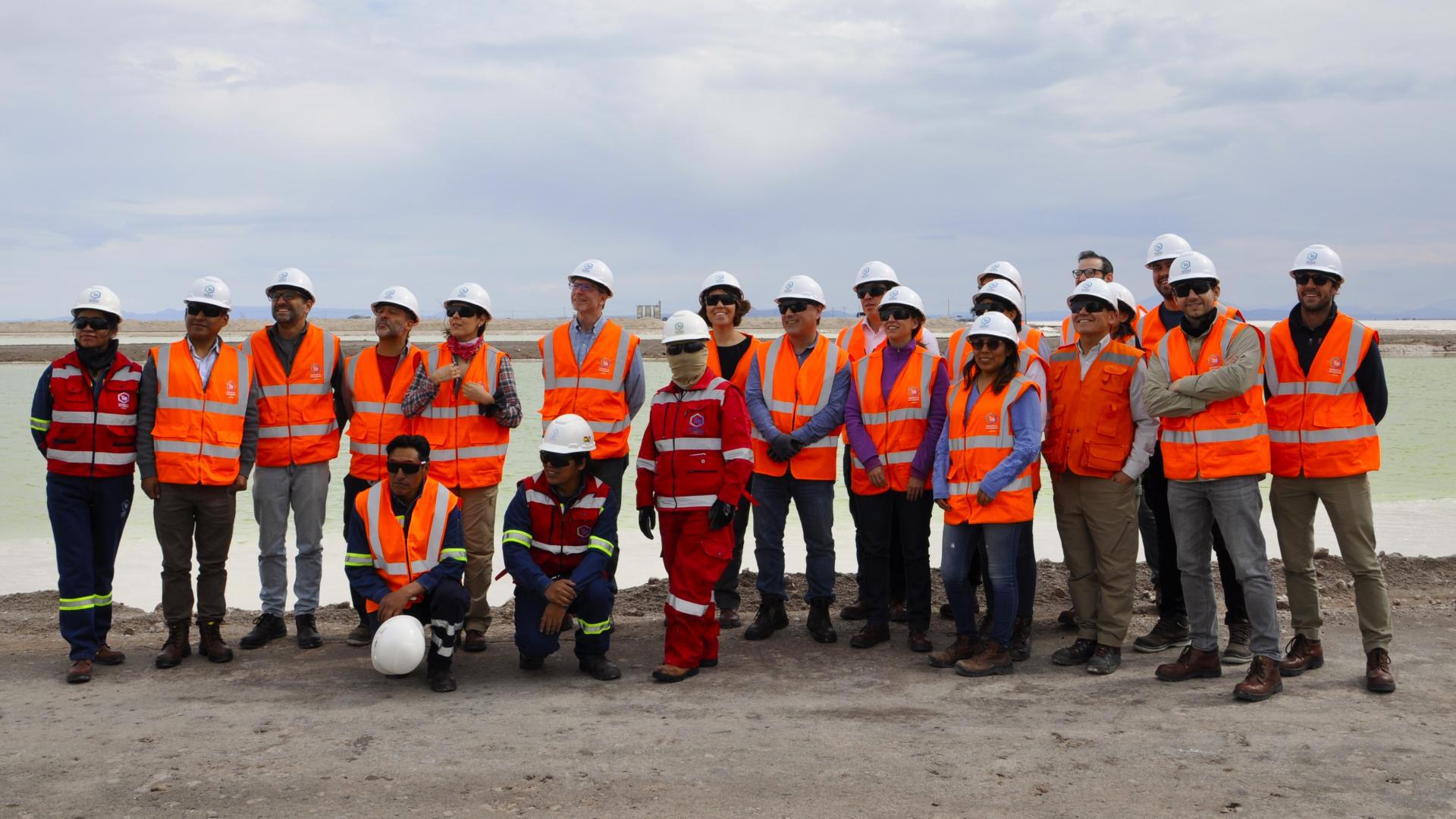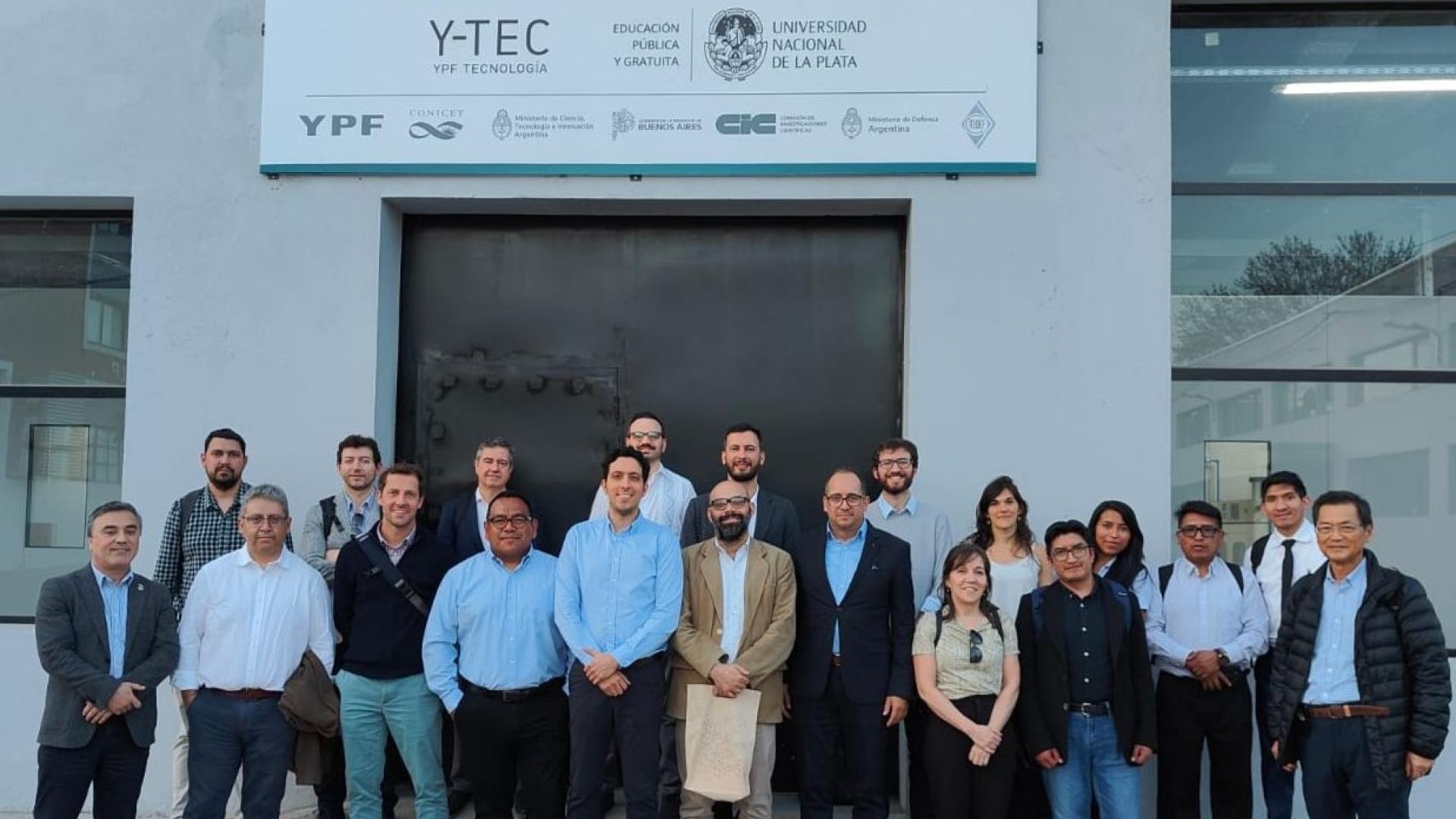Nota informativa
Dear Executive Secretaries of the sister UN Regional Economic Commissions,
Dear Selwin Hart, UN Assistant Secretary-General for the Climate Action Team (CAT)
Dear Thilmeeza Hussain, Director of the Regional Commissions New York Office,
Distinguished guests, colleagues, and participants,
Welcome to this side-event on how Critical Energy Transition Minerals can accelerate progress towards the Sustainable Development Goals (SDGs), convened under the auspices of the United Nations Regional Economic Commissions.
Today, we gather to address a defining challenge of our time: powering and enabling the global transition to low-carbon economies through the responsible extraction and utilization of critical minerals.
Access to Critical Minerals and Climate Change
As we all know well, critical minerals such as copper, lithium, nickel, cobalt, and rare earth elements, are indispensable components in the rapidly developing clean energy technologies—from wind turbines and solar panels to electric vehicles and battery storage systems.
Demand for these minerals is anticipated to surge threefold by 2030, underscoring the global shift from fossil fuels to renewable energy.
This shift is essential for realizing the SDGs and achieving net-zero carbon emissions by 2050.
The escalation of demand will require large investments and expansion of the mining frontier into territories with untapped resources.
This expansion poses major challenges.
An important first point to recognize is that it is not just one energy transition but many transitions, depending on the point of departure in each particular country or territory. You have a basic story about energy access for people without access, you have a pathway via solar panels, another one vía wind power, or expansion of hydro, and many others. Each pathway poses particular challenges: technological, financial, social, environmental.
Then you have productivity and sustainability challenges, as well as challenges in terms of impacts on livelihoods, ecosystems, health, human security, and rights.
The challenges are particularly acute in mineral-rich developing countries that could have the most to benefit by creating a whole new economy but also bear most of the negative impacts of mining activities.
The development of critical minerals requires an integrated approach and discussion about how to take advantage of the opportunities. It is not just a conversation about mining and extraction, it is also important to discuss the opportunities to go up the value chains of production not only of the raw minerals, but also, if possible along the battery cell component production or even battery cell and battery pack production.
And the relevant policies also have to take into account issues related with the ecosystem of production such as infrastructure and financing, as well as issues of regulation and governance.
All of this requires careful and effective management, particularly under a scenario of high growth. So it is something much more complex than a traditional conversation about extractives, it is a new and massive technological space and ecosystem that needs to be created.
Recent projections by the International Energy Agency point to a significant gap between prospective supply and demand of some of these minerals, particularly for copper and lithium.
The projected output in 2035 from planned mining projects is expected to fulfill just 70% of copper and 50% of lithium demand.
Latin America and the Caribbean holds a major endowment of these resources. Our region possesses 50% of the world's lithium reserves and 37% of copper, not to mention major shares of other mineral reserves. Countries like Argentina, Brazil, Bolivia, Chile, Mexico, and Peru are among the world’s top producers of these minerals.
This wealth presents an unparalleled opportunity for our region to play a leading role in the global energy transition. The economic rents generated by Critical Energy Transition Minerals exploitation and trade, along with access to low-carbon technologies, can also have unique implications for countries’ development.
Ensuring Fair Benefits, Local Value Addition, and Economic Diversification
Each of our regions will face different challenges and opportunities in this context, and we will soon hear from colleagues from the other Regional Economic Commissions.
In Latin America and the Caribbean ECLAC has identified renewable energies and sustainable transportation based on electromobility as among a strategic list or portfolio of sectors of opportunity for transforming growth patterns into a more inclusive and sustainable direction. These are the sectors that we see as part of the great productive transformation that countries in the region require to dynamize growth and make it more inclusive and sustainable as part of a new growth strategy.
As mineral extraction accelerates to meet the demands of this transition, it is imperative to ensure that countries and local communities endowed with these resources derive the greatest benefits. Today’s market value of key critical energy transition minerals is estimated at USD 325 billion. By 2040, the copper market alone should reach that amount. This is only regarding upstream segments and does not reflect market values in the manufacturing of low-carbon technologies.
Nevertheless, the market for critical minerals remains uncertain. After two years of significant increases, prices for lithium and most of these minerals have dropped dramatically. Price volatility is one of key vulnerabilities that economies reliant on mineral exports face, which can also compromise their fiscal space and capacity to generate long-term development.
At the international level, the productive agenda related to critical minerals for the energy transition is influenced by a context of rising geopolitical tensions, where major economic blocs are promoting various initiatives to support their own productive and industrial development.
Countries are implementing policy strategies, including subsidies, tariff policies, and other instruments to enhance domestic content of raw materials and promote national or regional supply chains. Policies such as "Made in China 2025", the United States' Inflation Reduction Act (IRA), the European Union's Green Deal Industrial Plan and Critical Raw Materials Act, and Japan's Green Transformation Policy, are examples of initiatives that aim to secure supply chains of critical minerals and to bolster national manufacturing capacities.
To ensure the economic benefits of critical minerals are equitably and fairly distributed, it is essential to adopt strategies that promote local value addition and economic diversification, particularly in resource rich countries.
Public-private partnerships, with the support of mineral consumer countries, the transfer of technologies, and capacity building in developing countries, will be key.
One effective approach is to leverage the technological advancements and environmental standards required for modern mineral extraction and processing.
UN's Role in Supporting Just Transitions and International Cooperation
The United Nations can play a pivotal role in supporting just transitions on critical minerals and boosting international cooperation.
ECLAC and the other Economic Commissions participate as members of the Technical Advisory Group of the Secretary General’s Panel on Critical Energy Transition Minerals. This panel is working to develop a set of common and voluntary principles to guide the transition and accelerate the race to renewable energy.
In addition, the UN system is gathered in a Working Group that is developing a Framework on Just Transitions for Critical Energy Transition Minerals. This framework aims to build trust, reliability, resilience, and benefit-sharing in existing critical mineral supply chains; particularly by supporting mineral-rich developing countries capacities for long-term sustainable development.
At the regional level, our Economic Commissions lead various initiatives that support building countries' capacities and enhancing sustainability in the extraction, processing, and beneficiation of critical minerals.
In ECLAC, we promote an agenda and dialogues on Lithium extraction and industrialization and support the Conference of Ministers of Mining of the Americas. Another prominent example is the Escazú Agreement on Access to Information, Public Participation, and Access to Justice in Environmental Matters, which exemplifies the regional cooperation and commitment to promoting informed and transparent decision-making processes coupled with effective public participation. This agreement not only strengthens environmental governance but also fosters equity and justice in the management of natural resources, ensuring that local communities are fully involved and benefit at every stage of the mining process.
Building on the outcomes of the Secretary General Panel, we can leverage our ongoing work and enhance the support to countries in each of our regions.
The UN system can enhance international cooperation, based on robust and existing standards. Ensuring that the benefits are shared equitably, we can build a resilient future for all regions in the world.
I look forward to hearing examples from other regions and exploring opportunities for strengthening collaboration.
Thank you.


